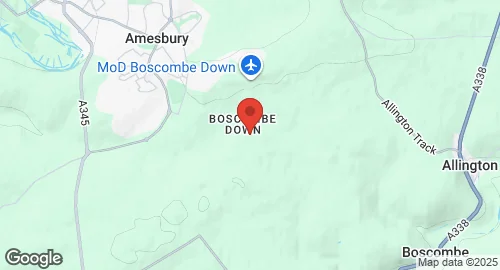MOD Boscombe Down
Summary
| Operating Country | 🇬🇧 United Kingdom |
| Location | 🇬🇧 United Kingdom |
| Status | ◉ Active |
| Usage | Military only |
| Year built | 1917 |
| Operating Organization | QinetiQ |
| Units |
|
Description
MOD Boscombe Down is a military aircraft testing and evaluation airfield located on the south-eastern outskirts of Amesbury, Wiltshire, England. The site is owned by the Ministry of Defence and operated by QinetiQ in partnership with the Royal Air Force. Established in October 1917 as Royal Flying Corps Station Red House Farm, it served as a training depot during the First World War before closing in 1920. It reopened in 1930 as Royal Air Force Boscombe Down, initially as a bomber station.
Since 1939, the base has been the home of the Aeroplane and Armament Experimental Establishment (A&AEE), later renamed the Aircraft and Armament Evaluation Establishment (AAEE), focusing on aircraft research and testing for the British Armed Forces. It played a crucial role in testing various aircraft during the Second World War and the Cold War, including the English Electric P 1, Folland Gnat, Hawker P.1067 (Hunter prototype), Westland Wyvern, and BAC TSR.2. The first hard-surface runway was opened in October 1945, leading to the current layout.
In the 21st century, following the creation of QinetiQ in 2001, the site operates under a Long Term Partnering Agreement with the MoD. It hosts the Joint Test and Evaluation Group (JTEG) and the Air Test and Evaluation Centre (ATEC). Current units include the Aircraft Test and Evaluation Centre, Empire Test Pilots' School, Rotary Wing Test and Evaluation Squadron, 744 Naval Air Squadron, Bristol University Air Squadron, Southampton University Air Squadron, and the Joint Aircraft Recovery and Transportation Squadron. An anti-jamming test facility, including one of Europe’s largest anechoic chambers, is planned for construction by 2026 to test military assets against electronic warfare threats.
